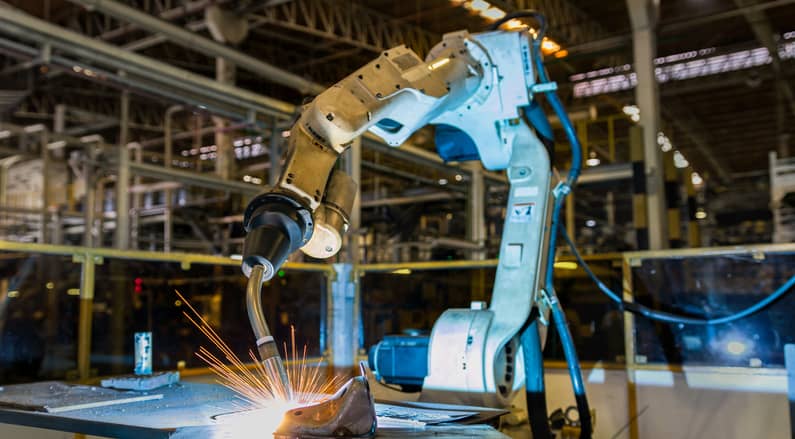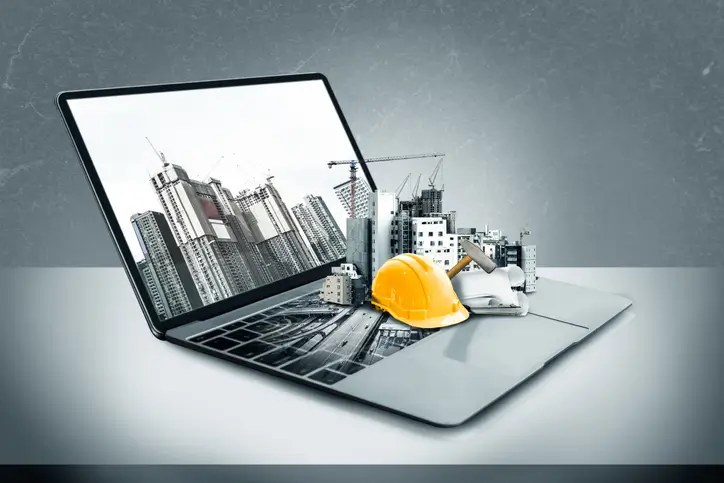Construction is gradually being replaced by technology, which alters the way projects are completed. Manual labor is expected to decline in the coming years, as a great deal of work will be automated. Robots can be a huge asset when it comes to tasks that require precision and speed. The construction industry changed dramatically now than it was fifty or hundred years ago, and it may change even more in the upcoming years.
Several different types of construction robots are destined to disrupt the construction industry on a large scale. such as a 3D-printing robot capable of rapidly constructing large structures. the mobile robotic arm is used to control a 3D printer, and using pre-determined instructions, this 3D printing robot prints a complete structurally sound building. This technique is also being used to construct bridges, with the Netherlands recently completing the construction of the world’s first 3D printed bridge.
The Robotic Revolution in Construction
Once the program is started, the 3D printers act independently, requiring only a single employee to monitor them. At the moment, more than 90% of site workers believe that the industry is unproductive. Additionally, there are construction robots for carpentry and brickwork, as well as robots capable of laying the whole street at once. These robots significantly improve the efficiency and speed of construction work.
Demolition robots are yet another type of construction robot that is rapidly gaining popularity. although they are slower than destruction crews, they are significantly safer and more cost-friendly when it comes to knocking down concrete and structural elements of a building. There are many other types of construction robots, such as wireless or automated vehicles, but the ones mentioned above are most trained to operate on today’s construction sites and may have the greatest impact.
How Robots Will Change Construction
Here’s how machines will completely transform construction.
1. They Will Prevent Repeated Stress Injuries
Repeated strain injuries are a persistent danger in the construction industry owing to the sensitivity of the job. In 2020, 7 workers died and 255,490 were injured due to overexertion. Construction robots can help prevent these accidents by assuming repeated tasks that would otherwise result in overexertion.
Tybot, a self-governing robot crafted to tie rebar all through bridge construction, is an example of this. Traditionally, this work has been performed by employees suspended high above roads or rivers. Tybot requires workers to construct approximately 10% of the bridge manually before the machine takes over and completes the remainder independently. This decreased work time makes job sites safer, minimizing injuries and enabling task completion more quickly.
2. They Will Enhance Productivity Through LIDAR Scanning
Doxel, a technology startup, is developing a robot that can walk upright and locate construction sites independently. While doing so, it provides a powerful 3D model of the jobsite using LIDAR laser scanners. During one presentation of the bot, it was discovered that this real-time modeling reduced the project’s spending plan by 11%. Additionally, it increased productivity by 38%. Employees should prioritize tasks that require their presence, while robots can accept over in situations requiring remarkable speed and strength.
3. They Will Decrease Errors On Worksites
Another most significant benefits of using construction robots are the reduction of errors. Robots can ensure accuracy and thus eliminate human error from the construction phase. Fewer errors mean lesser delays and repair activities. All of these factors can have a beneficial effect on the overall project’s budget.
4. They Will Save Cost
Robots have the potential to significantly reduce the total cost of the project procedure. By minimizing project delays and reducing the amount of time required to complete a task, expenses can be minimized. This may eventually result in the availability of more adequate health care.
5. They Will Increase Job Satisfaction
Now, Robots can handle strenuous manual labor, leaving humans on-site to monitor the entire project. Additionally, job satisfaction will be enhanced, as among the most tedious situations, on-site will be easily managed and with greater accuracy.
6. They Will Offer Enhance Constructions Quality
Not only can robotic machines perform tasks more quickly, but they can also do so with greater precision. In other words, construction robots may be able to provide lengthier engineering solutions in the near future. Additionally, they can serve as a catalyst for the development of novel architectural forms (e.g. green construction).
7. They Will Help Contractors Meet Deadlines
By expanding the accuracy of the entire procedure, all agents involved in construction will be able to adhere to specified deadlines and secure both time and money.
Drawbacks of Construction Robots
While construction robots will provide a number of advantages, they will also have some drawbacks.
1. The Employement In Construction Will Reduce
The introduction of robots into the building process will create great opportunities for those with a powerful interest in new innovations, but will also eliminate a significant number of on-site jobs. While construction robots cannot completely replace human existence, they can certainly reduce it significantly.
2. These Robots Will Be Expensive
We previously discussed how construction robots can assist you to save money during the project management process. Nonetheless, the cost of purchasing machinery remains prohibitively high. As a result, there is a good possibility that the best technique will be concentrated in the hands of lesser companies with the financial means to purchase it. As a result, many small and medium-sized construction firms may eventually cease operations.
3. Worksites Would Have To Provide Advance Trainings
Purchasing the appropriate construction robots is one thing. Having someone who understands how to operate it, on the other hand, is something else. Businesses will need to higher strike price time and money in training their employees on how to use this reducing technology. However, due to the impression that robots can have on the planning of a construction project, this should be viewed as a long-term investment.
4. Construction Robots’ Promising Future
In terms of construction robots, we are still in the initial stages of what could be a mass change for the industry. While what we have seen thus far is encouraging, time will judge how efficient construction robotics will be on work sites. They may turn out to be the solution for the growing lack of labor, or they may confirm to be more problematic.
Conclusions
In summary, the integration of construction robots marks a significant shift in the industry. These machines offer numerous advantages, including improved safety, productivity, and cost savings, while also reducing errors and enhancing job satisfaction.
However, challenges like potential job displacement and high costs need to be addressed. Despite these challenges, the promising future of construction robots has the potential to revolutionize the industry, making it safer, more efficient, and responsive to modern construction demands. It’s a transformative journey worth following.




